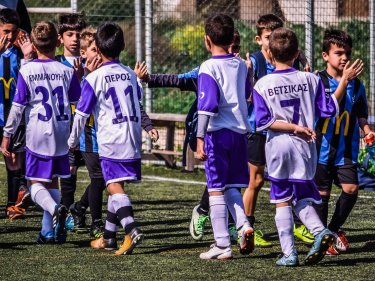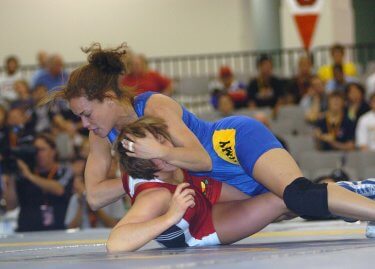(2 Minute Read)
Common thought tells us that youth will develop moral character by participating in sports. Unfortunately, moral character development is not simply soaked up from the environment, but needs to be taught and modeled (Lumpkin, Stoll, & Beller, 2003).

Although morality is based on the rules of culture (i.e., religion, family, etc.) imposed on the person, the person must “…[take] them as his own and [regulate] his own conduct by them” (Frankena, 1973, p. 8). Humans are designed for morality, but it is only through appropriate education, which includes thought discussion, and reflection guided by moral role models in an appropriate environment – that a person can develop morally (Lumpkin, Stoll, & Beller, 2003). When moral education works, sport can be an ideal space for moral character to be taught and modeled by sportsmanship behavior.

Recently, a friend shared a sportsmanship success story on her Facebook page. Her thirteen-year-old son is on the school wrestling team within a co-ed conference. She wrote in a Facebook post the following:
“Last night at a meet he was absolutely schooled by a girl his age and weight class. After the match, he shook her hand, shook her coach’s hand, came over to me and said, “Did you see that last move she had me in?! It was amazing! Knocked the wind out of me! I couldn’t even breathe!” No talk about if it was surprising to be beaten by a female. No sign of deflated masculinity. Just awe at this move he didn’t know and appreciation for her skill.”

Clearly, this young man demonstrated what real sportsmanship looks like alongside the potential moral growth that can occur within the sport. Sportsmanship is much more than following a game by giving the opposing team high-fives while muttering “good job”. Sportsmanship requires respect for opponents, rules, and officials (Lumpkin, Stoll, & Beller, 2003). It requires cherishing the activity above the win. Such behavior was exemplified by my friend’s son, who learned to value his opponent and the experience above all else.
Coaches can lead their students to become sportspersons through three actions.
- Sportsmanship must be modeled; “Be what you want your team to become” (Wooden & Jamison, 2005, p. 98).
- An environment that supports sportsmanship must be created. In other words, a setting built as a moral community, where each person is accepted, respected and positive behavior abounds (Reimer, Paolitto, & Hersh, 1983).
- Sportsmanship must be intentionally taught. By intentionally modeling, supporting, and teaching sportsmanship coaches contribute to the moral growth of their athletes.
References
Frankena, W. (1973). Ethics (2nd ed.). Upper Saddle River, NJ: Prentice Hall.
Lumpkin, A., Stoll, S. K., & Beller, J. M. (2003). Sport ethics: Applications for fair play (3rd ed.). New York, NY: McGraw-Hill Higher Education.
Reimer, J., Paolitto, D. P., & Hersh, R. H. (1983). Promoting moral growth. Prospect Heights, IL: Waveland Press Inc.
Wooden, J., & Jamison, S. (2005). Wooden on leadership. New York, NY: McGraw-Hill.

Great article Elaine! Have you read any Dr. David Light Shields? (https://characterandcitizenship.org/about-us/scholars?id=75 ) I’ve been following his work on True Competition for years and believe deeply that the concept holds the key to intentionally bringing caring, character and citizenship into the classroom. Best of luck going forward.